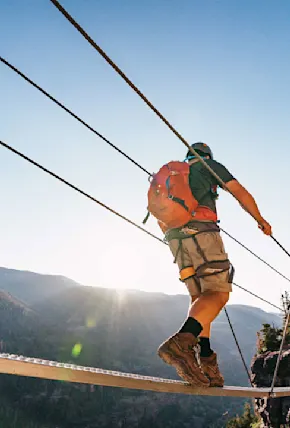Rock climbing at “the Qs” (as the climbing area is called by many locals) really took off in the 1960s when active quarrying operations ended. But while Quincy’s main quarry—the Granite Railway Quarry—was much deeper then (over 200 feet), between natural springs and rain, it began to fill with water. As a result, climbers accessing classic Quarries test pieces like Outside Corner, Pins, and Power of Positive Thinking did so by boat or by being lowered in from the top. The possibility of a fall into the murky depths below upped the pucker factor.
In the early 2000s, the Massachusetts department of conservation and recreation filled the quarries with dirt from Boston’s “Big Dig,” as part of an effort to stop local teens from cliff jumping into the water-filled abysses. Although nowadays many Quarries’ climbs have little actual visible rock, the area remains a popular post-work playground ground for Boston rock climbers. Both the local chapter of the Appalachian Mountain Club and the ski patrol of the nearby Blue Hills Reservation have regular climbing nights, while local climbing gyms and climbing schools regularly use the area for lessons.

Predator 5.13b at Rumney, NH | Photo by Jodie Morse
Other climbing in Boston Area
Plenty to see and do for climbers in the Commonwealth of Massachusetts and it’s surrounding areas. Below are just a few of my favorite spots.
(Only interested in climbing in Beantown? Check out our guide to Boston climbing.)
New Hampshire’s finest at Rumney and Pawtuckaway
At the southern reach of the White Mountain National Forest, Rumney Rocks offers the best sport climbing in the northeast bar none, with over 600 sport routes in addition to hundreds more boulders and trad climbs. It’s two hours north of Boston, but gyms in the area have frequent trips up there in the summer and fall. A little further south in Pawtuckaway lies some of the best bouldering in New England, though get ready to get high: Many of the area classics top out around 15 feet.
The North Shore
Roughly an hour north of the city by car, there’s a great selection of boulders scattered around the exurbs of the Cape Ann peninsula. Lynn Woods Reservations offers the densest number of problems for a day trip. If you’re over the Quincy paint, the Red Rock Park in Lynn has close to 40 easy-to-moderate top-rope lines to pull on.
Lincoln Woods
Is Providence part of the Boston area? The good people of Rhode Island would probably disagree, but Lincoln Woods State Park just north of the state capital is close enough by car to count (about an hour). There’s close to 1,000 boulder problems in the park, including the Pond Cave Traverse, a V4 with a little bit of spray paint on it and a lot of chalk in the cave. But the overhanging line on mostly jugs is must-try New England moderate. Check out our guide to climbing at Lincoln Woods here.
















